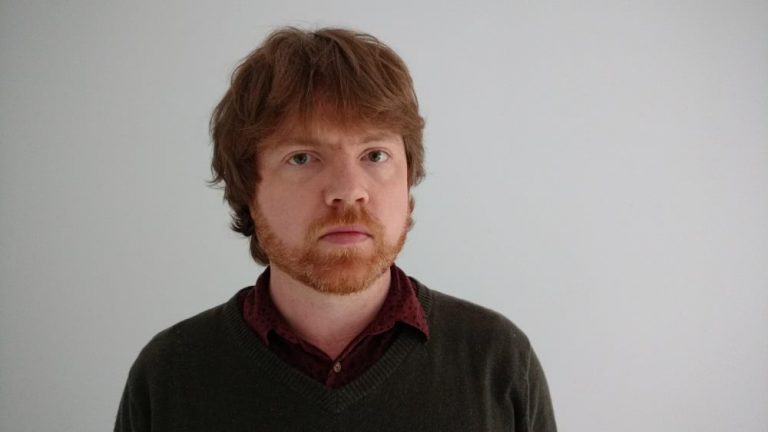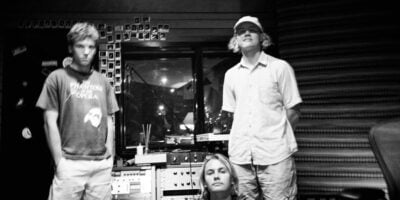Jorge Luis Borges always wanted to write an impossible book. For a long time, he thought it should be possible to pen a mystery novel that ends with the central character coming to a conclusion that the audience themselves reject – that, by the end of a hundred pages say, the novel’s erstwhile, chain-smoking detective could incorrectly decide that the butler did it, prompting the reader to go back and start the whole book from the beginning, searching for their own answers.
And Borges thought he could provide them, too. He thought he could write a book in which the real killer is obscured but not hidden; hard – but crucially, not impossible – to find. Reading is its own form of detective work after all, and Borges thought he could make his audience active participants in the drama.
The Town is, in some ways, a novel concerned with futile artistry
But Borges was wrong. Or if not strictly wrong, then perhaps dedicated to an inherently unachievable task: after years of trying, he found himself forced to abandon the effort. He could just find no way to subtly imply to the reader that they should doubt the central hero; no way to stop them from reaching the disappointing, obviously incorrect conclusion, and feeling less ready to solve their own mystery and more ready to hurl the book across the room. And so the idea remained theoretical; a kind of self-defeating artistic feat to be contemplated but never written down.
Shaun Prescott’s The Town is full of such impossible books. The most important one, the writing of which takes up the bulk of Prescott’s novel, is a non-fiction account of disappearing towns around the Central West of New South Wales. Its author, The Town’s measured, seemingly unflappable anonymous narrator, wants to end the work with a scene that might “truly horrify people” – with an image of “a crisp green grass plain” full of “naked people being flayed by a cloaked figure.”
There is also the temptation, on first pass, to read Australia’s cultural obsession with disappearance into The Town
This, he feels, is the only way to “reflect my vague notion that the disappearing towns of the Central West of New South Wales needed to be as important to the reader and the world as they were to me”; a way of tying together the strange, aimless work he dictates into a small hand-held recorder, and then listens back to while packing shelves at Woolworths.
Love Music?
Get your daily dose of metal, rock, indie, pop, and everything else in between.
Sure, the scene would be a lie; a fiction. But, having followed eight chapters worth of carefully reported, factual analysis, it would somehow become real by proxy. It would become a kind of spiritual truth, the narrator feels, able to say something about disappearing towns of the Central West of New South Wales that the facts themselves cannot.
No critic has called The Town a mix between Franz Kafka and Joan Lindsay’s Picnic At Hanging Rock yet, but no-one would blink if they did
That we never read the narrator’s book – that it remains itself an idea rather than a real world, consumable object – is kind of the point. After all, The Town is, in some ways, a novel concerned with futile artistry; with the idea that there are things that we can think but cannot do. It is a novel of musicians without audiences, and publicans without customers, and librarians trying to write books about their sadness that they well know they will never be able to complete. It is a book about impotence; about stored up potential, and how quickly it can go to waste, like the legs of a retired weightlifter turning to fat.
There is also the temptation, on first pass, to read Australia’s cultural obsession with disappearance into The Town – to see it as an examination of the way we collectively lean on the myth of white vanishing so as to assuage our genocidal guilt, and to express our discomfort living in a landscape we know has the power to actively expel us. There is the sense threaded throughout the novel that its aimless, morally unconflicted “heroes” are aliens themselves – that they have no kinship to each other, or to the burnt land they stand on. No critic has called The Town a mix between Franz Kafka and Joan Lindsay’s Picnic At Hanging Rock yet, but no-one would blink if they did.
The novel’s salt of the earth, true blue Aussie types are wind-blasted figures dragging themselves around an almost wholly deserted landscape
There are also, if one is ready to look for them, clues in there to suggest Prescott’s novel is about gentrification; about the subtle disappearance of blue collar workers, and blue collar towns, and the Akira-like absorbent properties of the middle class. After all, the novel’s salt of the earth, true blue Aussie types are wind-blasted figures dragging themselves around an almost wholly deserted landscape; avatars trapped in a video game that has not been played for many years. They are, quite literally, going extinct, threatened by the nearby city they feel will engulf them.
In its artful, brutal emptiness, The Town is one of the very best books you will read this year.
But Prescott is not writing Borges’ impossible book, so it is ultimately futile to drag The Town for bodies, and discarded murder weapons, and clues. The Town is not about anything the way a broken shin bone is not about anything, and to reduce it to simple social commentary or criticism is to go full witch doctor, and attempt to draw auguries out of a mound of steaming entrails.
No, by the time The Town’s brutally understated conclusion rolls around, no lesson has been imparted; no great moral has been unearthed. It is a hole dug in the middle of the outback; a door that leads to nowhere. And in its artful, brutal emptiness, it is one of the very best books you will read this year.
The Town is out now through Lifted Brow books.


































